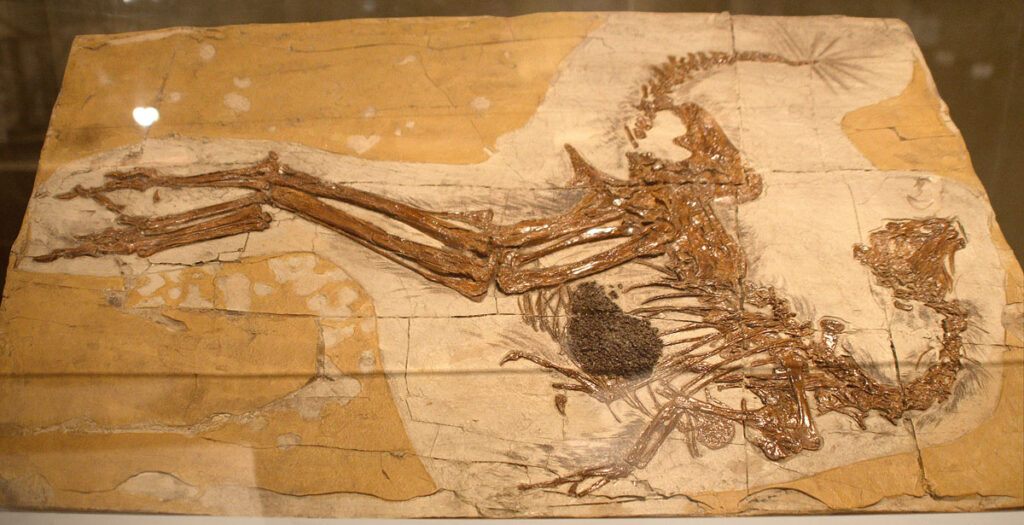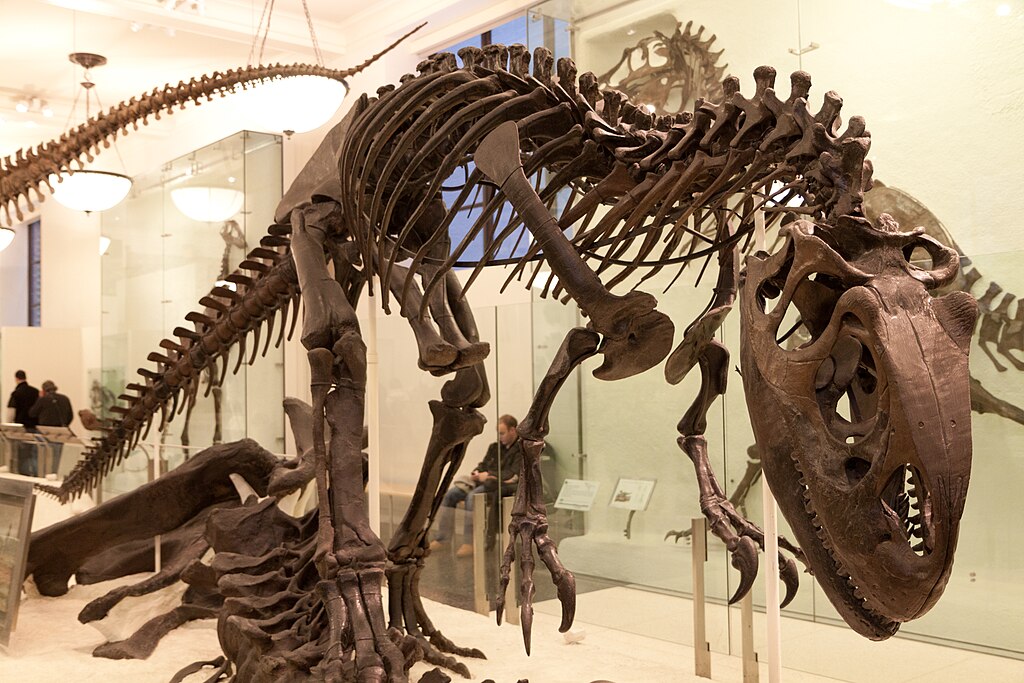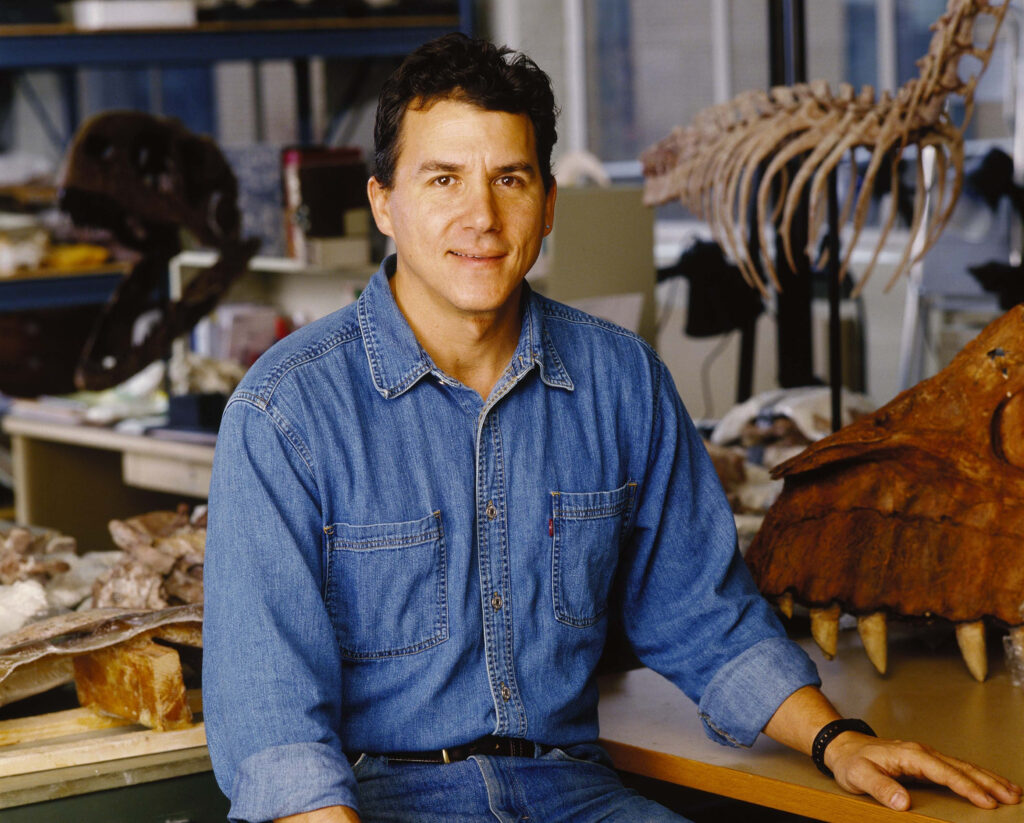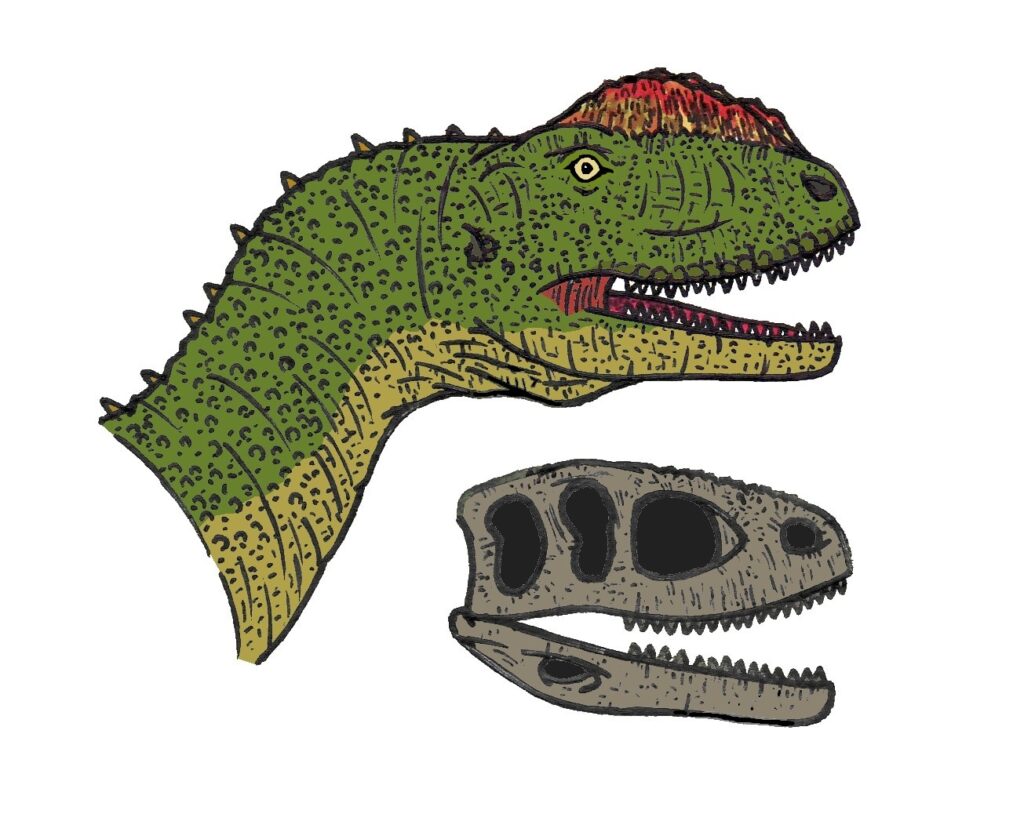Paul Sereno is one of paleontology’s most charismatic and accomplished figures, a modern-day Indiana Jones whose expeditions across Africa’s unforgiving deserts have revolutionized our understanding of dinosaur evolution. With his keen eye for fossil-rich landscapes and an adventurous spirit, Sereno has unearthed some of the most significant dinosaur specimens ever discovered on the African continent. From the sail-backed Spinosaurus to the crocodile-snouted Suchomimus, his findings have illuminated crucial chapters in Earth’s prehistoric narrative. This renowned University of Chicago paleontologist combines scientific rigor with a passionate commitment to education and conservation, making him not just a discoverer of ancient life but a compelling storyteller who brings the past vividly into our present understanding.
Early Life and Academic Foundations

Born in Aurora, Illinois, in 1957, Paul Sereno developed an early fascination with the natural world that would shape his future career. Growing up as one of five children in a working-class family, Sereno initially pursued artistic interests before discovering his passion for science during college. He earned his undergraduate degree in biology and art from Northern Illinois University in 1979, where his dual interests in scientific inquiry and visual representation began to merge. This combination would later prove invaluable in his paleontological work, where visualization and artistic reconstruction often complement scientific analysis. Sereno continued his education at Columbia University and then at the University of Chicago, where he completed his doctorate in geology in 1987 with a groundbreaking dissertation on dinosaur evolution. His academic journey laid the foundation for a career that would bridge meticulous scientific methodology with the thrill of exploration.
The Making of a Fossil Hunter

Sereno’s transformation from academic to field explorer began in earnest during the late 1980s and early 1990s as he organized his first major expeditions. Unlike many paleontologists who focus on well-established fossil regions in North America, Sereno deliberately sought out unexplored territories, particularly in Africa and South America, where the dinosaur fossil record remained largely undocumented. His approach combined old-school exploration techniques with modern scientific methods, utilizing satellite imagery to identify potential fossil beds while still embracing the physical demands of desert fieldwork. Early in his career, Sereno demonstrated a remarkable ability to locate productive fossil sites in harsh environments where others had not ventured. His fieldwork philosophy emphasized thorough preparation, international collaboration, and a willingness to endure extreme conditions—from scorching Saharan temperatures to logistical challenges in politically unstable regions. This combination of scientific vision and adventurous spirit quickly established him as a distinctive voice in paleontology.
Breakthrough in Niger: Discovering Afrovenator

In 1993, Sereno led a watershed expedition to Niger that resulted in the discovery of Afrovenator abakensis, a significant theropod dinosaur from the Early Cretaceous period. This 27-foot predator represented the most complete dinosaur skeleton ever found in the region and provided crucial insights into dinosaur evolution in Africa. The expedition braved the harsh conditions of the Ténéré Desert, where temperatures regularly exceeded 125 degrees Fahrenheit, making fossil excavation extremely challenging. Sereno and his team meticulously documented the geological context of their find, establishing that Afrovenator lived approximately 130 million years ago in what was then a lush river system quite unlike today’s arid environment. The discovery was particularly significant because it helped fill a major gap in the fossil record during a time when the supercontinent Pangaea was breaking apart, isolating dinosaur populations and driving distinct evolutionary paths. Afrovenator’s anatomy showed interesting combinations of primitive and advanced features that helped paleontologists better understand the evolutionary relationships between different theropod lineages across continents.
The Spectacular Suchomimus

Sereno’s 1997 expedition to Niger yielded another extraordinary discovery: Suchomimus tenerensis, a massive spinosaurid dinosaur with distinctive crocodile-like features. Standing over 36 feet long and weighing approximately four tons, Suchomimus represented a remarkable example of convergent evolution, with its elongated snout and conical teeth evolved for fishin, similar to modern crocodilians but in a completely different vertebrate lineage. The fossil included about 70 percent of the skeleton, making it one of the most complete spinosaurid specimens ever found. Sereno’s team worked under brutal conditions, extracting the massive bones from rock-hard sandstone while contending with sandstorms and limited water supplies. The name “Suchomimus” translates to “crocodile mimic,” reflecting the creature’s specialized adaptations for a semi-aquatic lifestyle along ancient river systems. This discovery significantly expanded scientific understanding of ecosystem diversity in Cretaceous Africa and demonstrated how large predatory dinosaurs had evolved specialized feeding strategies to exploit different environmental niches, challenging previous assumptions about theropod ecology.
Revolutionizing Our Understanding of Spinosaurus

Perhaps Sereno’s most influential contribution to dinosaur paleontology came through his work on Spinosaurus aegyptiacus, the largest known carnivorous dinosaur. In 2014, Sereno and his colleague Nizar Ibrahim published groundbreaking research that completely transformed scientific understanding of this enigmatic creature. Based on new fossil evidence from Morocco, they determined that Spinosaurus was primarily aquatic—the first known swimming dinosaur, with adaptations including dense bones for buoyancy control, paddle-like feet, and a crocodile-like skull optimized for catching fish. The team’s reconstruction revealed that Spinosaurus had shorter hind limbs than previously thought, suggesting it was better adapted for swimming than walking on land. This radical reinterpretation challenged long-held assumptions about dinosaur ecology and behavior, demonstrating that some theropods had evolved for life in water rather than on land. Sereno’s methodical approach to analyzing the fossils, combined with digital modeling and comparative anatomy, provided compelling evidence for this revolutionary perspective. The discovery represented a paradigm shift in paleontological thinking, highlighting how much remains to be learned about dinosaur diversity and adaptation even after more than a century of research.
African Dinosaur Chronology: Filling in the Gaps

One of Sereno’s most significant scientific contributions has been systematically documenting Africa’s dinosaur chronology, providing crucial contextual understanding of how these animals evolved on the continent. Before his work, the African dinosaur record was fragmented and poorly understood compared to North American and Asian fossil records. Through methodical expeditions across Niger, Morocco, Egypt, and South Africa, Sereno has helped establish a comprehensive timeline of dinosaur evolution across different African regions and geological periods. His team’s discoveries have included not just isolated specimens but entire fossil assemblages that reveal complex ecosystems from different periods. This chronological mapping has allowed paleontologists to track how dinosaur communities changed over time in response to continental drift, climate fluctuations, and other environmental factors. Sereno has been particularly focused on understanding the Middle and Late Cretaceous periods in Africa, timeframes previously considered “dark ages” in the fossil record. By illuminating these gaps, his work has enabled scientists to make meaningful comparisons between dinosaur evolution in Africa and other continents, revealing both parallel adaptations and unique evolutionary paths.
The Human Angle: Discovering the Ancient Humans of Gobero

While primarily known for his dinosaur discoveries, Sereno made an unexpected but significant contribution to anthropology in 2000 when his team discovered the Gobero archaeological site in Niger—the largest and oldest known cemetery in the Sahara Desert. Dating back approximately 10,000 years, this remarkable site contained the well-preserved remains of over 200 individuals from two distinct cultures who lived during periods when the Sahara was green and hospitable. The discovery provided unprecedented insights into human adaptation to changing climate conditions, as these communities thrived during wet periods and abandoned the region during arid phases. Sereno’s meticulous documentation of the site, including burial positions, grave goods, and associated artifacts, revealed sophisticated cultural practices, including apparent ceremonial burials. Particularly poignant was the discovery of a mother and two children buried together, their skeletons intertwined in what appeared to be an embrace, offering a rare emotional connection to human lives from the deep past. This anthropological work demonstrated Sereno’s scientific versatility and his commitment to understanding not just prehistoric animals but the full spectrum of life that once thrived in what is now the forbidding Sahara Desert.
Innovative Field Techniques and Technology

Sereno has consistently pioneered innovative approaches to paleontological fieldwork, combining traditional excavation methods with cutting-edge technology to maximize both discovery potential and scientific documentation. His expeditions typically employ satellite imagery and geological mapping to identify promising fossil-bearing strata before teams ever reach the field, significantly improving efficiency in remote locations. Once at dig sites, Sereno implements rigorous documentation protocols including photogrammetry, GPS mapping, and detailed stratigraphic analysis to preserve crucial contextual information about each discovery. His teams utilize specialized extraction techniques, including plaster jacketing modified for extreme desert conditions, where traditional materials might fail due to intense heat and aridity. For particularly fragile specimens, Sereno has developed custom stabilization compounds that can be applied in field conditions to prevent fossil deterioration during transport. These methodological innovations have been particularly important in African fieldwork, where logistical challenges and environmental extremes require adaptable approaches. Sereno has also been an early adopter of digital modeling and CT scanning technologies, allowing for non-destructive analysis of fossil material and the creation of detailed three-dimensional models that can be shared globally with other researchers.
Project Exploration: Making Science Accessible

Recognizing that scientific discovery has limited impact if confined to academic circles, Sereno co-founded Project Exploration in 1999 with educator Gabrielle Lyon. This nonprofit organization aims to make science accessible to communities traditionally underrepresented in scientific fields, particularly girls and students of color from low-income backgrounds in Chicago. Through innovative programs like “Dinosaur Giants” and “All Girls Expeditions,” Project Exploration has provided thousands of young people with hands-on scientific experiences and mentorship opportunities. The organization emphasizes long-term engagement rather than one-off encounters, following participants through their educational journeys and supporting their development as young scientists. Sereno frequently involves Project Exploration students in his laboratory work, allowing them to participate in real research rather than simulated exercises. His commitment to inclusive science education reflects a belief that diversity strengthens scientific inquiry by bringing multiple perspectives to complex problems. Through Project Exploration, Sereno has created a model for how research scientists can meaningfully engage with public education and diversity initiatives, demonstrating that outreach need not come at the expense of research excellence but can instead complement and energize scientific work.
Media Presence and Public Communication

Sereno has distinguished himself as an exceptionally effective communicator of scientific concepts to general audiences, utilizing various media platforms to share paleontological discoveries. His expeditions have been featured in numerous National Geographic documentaries, where his natural charisma and ability to explain complex scientific concepts in accessible language have made him a compelling screen presence. Sereno regularly contributes to mainstream publications, including Scientific American and popular science websites, translating technical findings into narratives that capture public imagination. Unlike some scientists who resist media engagement, he embraces it as an essential component of modern scientific practice, recognizing that public support is crucial for continued research funding. His communication style balances scientific accuracy with narrative flair, often drawing parallels between ancient ecosystems and contemporary environmental challenges to make paleontology relevant to current concerns. Sereno’s photogenic appearance and adventurous persona have sometimes led critics to question his scientific seriousness, but his substantial publication record in peer-reviewed journals demonstrates that public engagement hasn’t compromised his scientific rigor. Through his media work, Sereno has helped transform the public image of paleontology from a dusty academic pursuit to an exciting frontier science with important implications for understanding Earth’s history and future.
Conservation Implications of Paleontological Work

Sereno’s research has increasingly highlighted connections between paleontological discoveries and modern conservation efforts, emphasizing how understanding past extinctions and ecosystem changes can inform current environmental policies. His work documenting ancient Saharan environments—once verdant wetlands teeming with diverse fauna—provides sobering context for contemporary climate change scenarios and desertification processes. Through public lectures and articles, Sereno frequently draws parallels between the environmental pressures that affected dinosaur populations and those threatening modern species, noting that the rate of current changes far exceeds most prehistoric precedents. He has been particularly vocal about the conservation value of understanding how species adapted to or failed to survive past climate transitions. Beyond these conceptual connections, Sereno’s fieldwork has practical conservation implications through his collaborations with local authorities in Niger, Morocco, and other countries to protect fossil sites from looting and establish sustainable paleoecotourism initiatives. His team trains local scientists and fossil preparators, building capacity for countries to manage their paleontological heritage rather than relying on foreign experts. These efforts exemplify how paleontology can contribute to both natural and cultural conservation in regions facing significant environmental and economic challenges.
Academic Legacy and Scientific Impact

As Sereno’s career has matured, his scientific impact can be measured both through his direct discoveries and his broader influence on the field of paleontology. With over 100 peer-reviewed publications in prestigious journals including Science and Nature, his research has fundamentally reshaped understanding of dinosaur evolution, particularly regarding the theropod lineage and African dinosaur diversity. The dinosaur taxa he has named and described—including Afrovenator, Suchomimus, Rugops, and Eocarcharia—have become essential reference points in studies of Cretaceous ecosystems. Perhaps more significantly, Sereno has helped reorient paleontological attention toward previously neglected regions, demonstrating the scientific importance of African fossil deposits and inspiring a new generation of research in these areas. His methodological contributions, particularly regarding phylogenetic analysis and comparative anatomy, have influenced how paleontologists approach questions of evolutionary relationships. As a mentor, Sereno has trained dozens of graduate students and postdoctoral researchers who now lead their research programs around the world, extending his scientific influence through this academic lineage. His particular emphasis on supporting African paleontologists has helped address historical imbalances in the field, where fossil-rich countries often lacked the infrastructure to study their natural heritage.
Future Horizons: Ongoing Expeditions and Research

Even after decades of groundbreaking discoveries, Sereno continues to pursue ambitious research programs that promise to further transform our understanding of prehistoric life. His ongoing work in Niger’s Ténéré Desert focuses on documenting complete ecosystems rather than isolated specimens, providing comprehensive pictures of ancient food webs and species interactions. Current projects include a detailed analysis of fossil crocodilians that shared environments with dinosaurs, offering insights into niche partitioning among prehistoric predators. Sereno’s team is also applying advanced isotope analysis and microscopy techniques to existing specimens, extracting new information about dinosaur physiology, diet, and growth patterns from previously collected material. Looking forward, he has identified several promising regions in Chad, Libya, and Morocco for future expeditions, based on satellite imagery and geological mapping that suggest untapped fossil resources. Sereno continues to embrace technological innovation, currently developing portable CT scanning equipment that could revolutionize the field assessment of fossils before excavation. His research increasingly incorporates multidisciplinary approaches, collaborating with climate scientists, geochemists, and ecologists to place paleontological findings in a broader context. Through these ongoing efforts, Sereno ensures that the field of paleontology remains dynamic and continues to yield surprising insights into Earth’s evolutionary history.
Conclusion

Paul Sereno represents a rare combination of scientific excellence and adventurous spirit that has transformed our understanding of dinosaur evolution, particularly in Africa. Through decades of expeditions across some of Earth’s most challenging environments, he has uncovered crucial fossils that fill major gaps in the prehistoric record and sometimes completely overturn previous assumptions, as with the aquatic adaptations of Spinosaurus. Beyond his scientific contributions, Sereno’s commitment to education, diversity in science, and conservation extends his impact far beyond academic paleontology. As both a meticulous researcher and a charismatic science communicator, he embodies how modern paleontology can bridge rigorous fieldwork with public engagement, making ancient history relevant to contemporary audiences. Through his ongoing work, future generations of scientists and fossil enthusiasts will continue to benefit from the windows he has opened into Africa’s prehistoric past.




